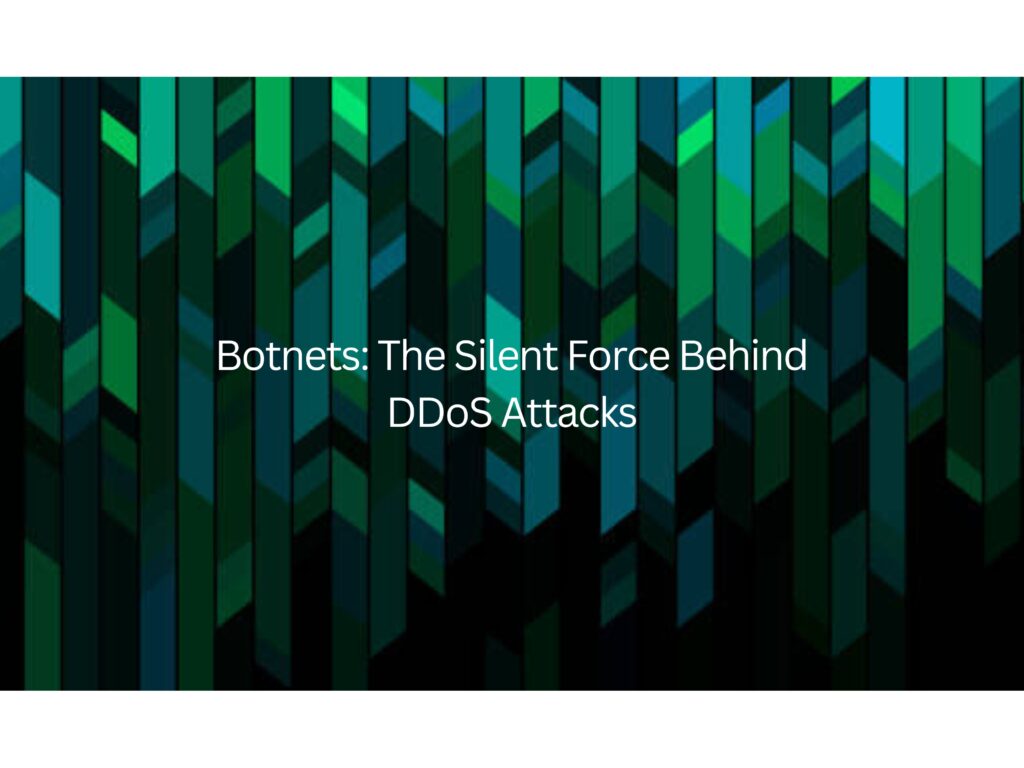Since practically every part of life has a digital trace in today’s linked society, hackers are a constant concern. assaults that cause the most disruption are Distributed Denial of Service (DDoS) assaults. In addition to causing severe financial and reputational harm to companies, these attacks have the ability to shut down websites and disrupt online services. Botnets, however, are frequently the unseen, quiet force behind these massive disruptions, directing the mayhem.
A botnet is a collection of computers, devices, or servers that have been infected with malware, allowing a remote attacker to operate them without the owner’s knowledge. Botnet devices are frequently referred to as “bots” or “zombies,” indicating that they operate without the user’s consent or awareness. The owners of these infected devices may be unaware that their computers are being utilized for criminal reasons, making botnets a very dangerous menace.
Botnets are the foundation of most DDoS assaults. A typical DDoS assault involves the attacker using a botnet to flood a target server or network with a tremendous volume of traffic that exceeds its capacity. It is incredibly difficult to restrict traffic because it originates from so many different sources—thousands, if not millions, of infected devices. The target server becomes overburdened and unable to process genuine requests, thus shutting down or becoming unreachable. This strategy makes botnet-driven DDoS attacks extremely strong, since the sheer number of infected devices enables for massive amounts of traffic to be directed at the target.
A botnet-driven DDoS attack’s strength is its decentralization. Unlike traditional cyberattacks, which can be traced back to one or a few locations, a botnet enables an attacker to control devices from all over the world. These infected devices could be spread across numerous countries, connected via various Internet Service Providers (ISPs), and hosted on a variety of platforms, ranging from desktop PCs to IoT devices such as smart refrigerators and security cameras. As a result, neutralizing a DDoS assault caused by a botnet necessitates a coordinated global reaction, which is frequently difficult to perform in real time.
One of botnets’ harmful characteristics is their adaptability. Cybercriminals use complex tactics to continuously evolve their botnets, making identification more difficult for cybersecurity professionals. Botnets are sometimes designed to run discreetly, executing DDoS attacks at regular intervals or combining with other nefarious operations such as data breaches, spam campaigns, or cryptocurrency mining. The proliferation of IoT devices, many of which have lax security protocols, has also given a convenient entry point for botnets to spread their reach, complicating the fight against these networks.
Botnets are no longer just for lone hackers; they are being employed by criminal groups, nation-state actors, and hacktivists with a variety of motivations. Botnets are a versatile and very effective method of attack, whether used to extort firms for ransom, disrupt commercial rivals, make a political statement, or cause mass fear. In other situations, they are even available for hire on the dark web, allowing nearly anyone with enough money and basic hacking knowledge to conduct a DDoS attack.
Fighting botnets and the DDoS attacks they facilitate is a difficult task. To mitigate the impact of these attacks, cybersecurity professionals use a number of protection measures, including traffic filtering, blackholing, and traffic shaping. However, these solutions are frequently reactive, responding to an attack after it has begun. The most effective defense techniques include proactive measures such as regular device upgrades, network monitoring, and improved security protocols for IoT devices, which can help lower the possibility of devices becoming involved in botnets in the first place.
Finally, botnets pose a huge threat to the stability and security of the Internet. Their capacity to function in the background, secretly recruiting devices into large networks of zombie machines, makes them an extremely powerful tool in the hands of cybercriminals. As the scope and frequency of DDoS attacks grow, it is critical to understand the function of botnets. While security measures improve, it is obvious that the botnet, the silent force behind many of these attacks, will continue to play an important role in the continuing cybersecurity struggle.
Read More:
How to Protect Server from DDoS Attacks?
DDoS Attack Recovery: Steps to Bounce Back After an Incident
DDoS Attack Prevention and Anti-DDoS Protection Best Practices




